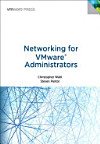vSphere: An Introduction to the Virtualization Platform 03/04/2023 – Posted in: Learning, Technology, Virtualization – Tags: cloud infrastructure, data centers, virtual machines, virtualization, VMware, vSphere
vSphere is a virtualization platform developed by VMware that enables businesses to create a virtual environment for running applications, data centers, and cloud infrastructures. It provides a complete set of tools for managing virtual machines, storage, networking, and security, making it one of the most popular virtualization platforms in the market today.
Benefits of vSphere
There are numerous benefits of using vSphere, such as:
- Cost Savings: By consolidating physical servers onto virtual machines, businesses can save on hardware costs and reduce power consumption, thus lowering operational expenses.
- Efficient Resource Utilization: vSphere allows businesses to optimize their IT infrastructure by allocating resources dynamically, based on demand. This improves the efficiency of the system and reduces the risk of downtime.
- Increased Security: vSphere provides a comprehensive set of security features, including network security, encryption, and access control. These features help protect the virtual environment from threats, such as malware and unauthorized access.
- Disaster Recovery: vSphere allows businesses to create replicas of their virtual machines and store them in remote data centers. This ensures business continuity in case of a disaster, as the replicated machines can be quickly activated.
vSphere Features
vSphere comes with a range of features that make it a comprehensive virtualization platform. Here are some of the key features:
- vCenter Server: vCenter Server is a centralized management tool that allows businesses to manage multiple virtual machines and hosts from a single location.
- vMotion: vMotion enables live migration of virtual machines from one host to another without interrupting the running applications.
- High Availability: vSphere provides high availability by automatically restarting virtual machines in case of a host failure.
- Distributed Resource Scheduler (DRS): DRS enables automated load balancing of virtual machines across hosts to ensure optimal resource utilization.
- Fault Tolerance: Fault Tolerance provides continuous availability of critical applications by maintaining a replica of the virtual machine on a different host.
- Storage vMotion: Storage vMotion enables live migration of virtual machine storage from one datastore to another.
vSphere Licensing
vSphere is available in several licensing editions, each offering different features and capabilities. The three main editions are:
- vSphere Standard: This is the basic edition that includes all the core virtualization features, such as vCenter Server, vMotion, and High Availability.
- vSphere Enterprise: This edition includes additional features, such as Distributed Resource Scheduler (DRS) and Storage vMotion.
- vSphere Enterprise Plus: This is the most advanced edition that includes all the features of vSphere Enterprise, as well as additional features, such as Fault Tolerance and Distributed Switch.
Conclusion
vSphere is a powerful virtualization platform that offers numerous benefits for businesses. Its comprehensive set of features, including vCenter Server, vMotion, High Availability, DRS, Fault Tolerance, and Storage vMotion, make it a popular choice for businesses of all sizes. With its range of licensing options, businesses can choose the edition that best meets their needs and budget.
More Articles
Books
YouTube Video






